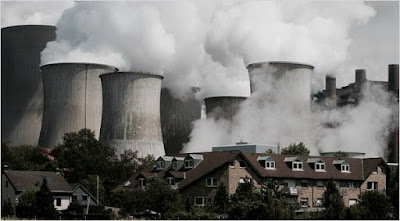Renewable energy: solar and solar thermal (PV and CSP)
Recently, there have been dramatic breakthroughs in solar energy that will help further the mainstream use of photovoltaic (PV) technology, bringing solar closer to cost parity with fossil fuels as a viable energy source to power the grid. A key development that will enable the widespread use of solar is the production of cells using less expensive, and readily available materials. Silicon has traditionally been the preferred material for PV, however cadmium telluride, copper and selenium (among other materials) are now also used to produce PV cells. These materials are used to produce highly efficient, low cost cells.
Nano PV cells result in much more compact, thinner, more efficient solar units. Nano technologies in PV with from 4 to 7 times (or more) the efficiency of standard photovoltaic cells are in the R&D phase today, with limited commercial availability. There are nano and alternative material PV cells with substantially higher efficiency than the standard (double to triple the standard 12-15% efficiency) in use today. The solar arrays now being produced could be exponentially improved with the development, refinement and implementation of nano technology.
In addition to advancements in traditional photovoltaic technology, there have been exponential advancements in the field of solar thermal energy. Instead of simply converting energy from the sun into electricity, with solar thermal technology, solar energy heats water, molten salt, or another working fluid, and then steam is used to drive generators. Solar thermal represents an advancement in solar energy with 4 to 5 times the power density of PV. However, reductions in the cost of this technology have been difficult to realize, preventing it from really taking off.
One commercially successful application of solar power is the solar powered water heater. Solar powered water heaters are mandatory in new construction in the entire country of Israel, and now, in the state of Hawaii. Some of the other applications of solar energy include power generation and heating even in remotely situated buildings, in industrial buildings, schools, hospitals, etc...
Both types of solar energy (PV and solar thermal) will continue to steadily lessen in cost as technological advancements are made. However, photovoltaic is projected to remain ahead of thermal in terms of cost of production and utilization. Solar thermal does have a couple of advantages which compensate for the higher cost. Solar thermal energy is produced consistently throughout the day, not relying on weather conditions. relatedThe turbine will run on natural gas if there is no sun for an extended period of time. Solar thermal units fit easily with power storage systems and will continue to produce energy at night, using energy harnessed during the day.



